Proofs and Samples
We introduce the various proofs and samples you may want to use to check your print products before going to press, what they are and how to choose which best suits your needs
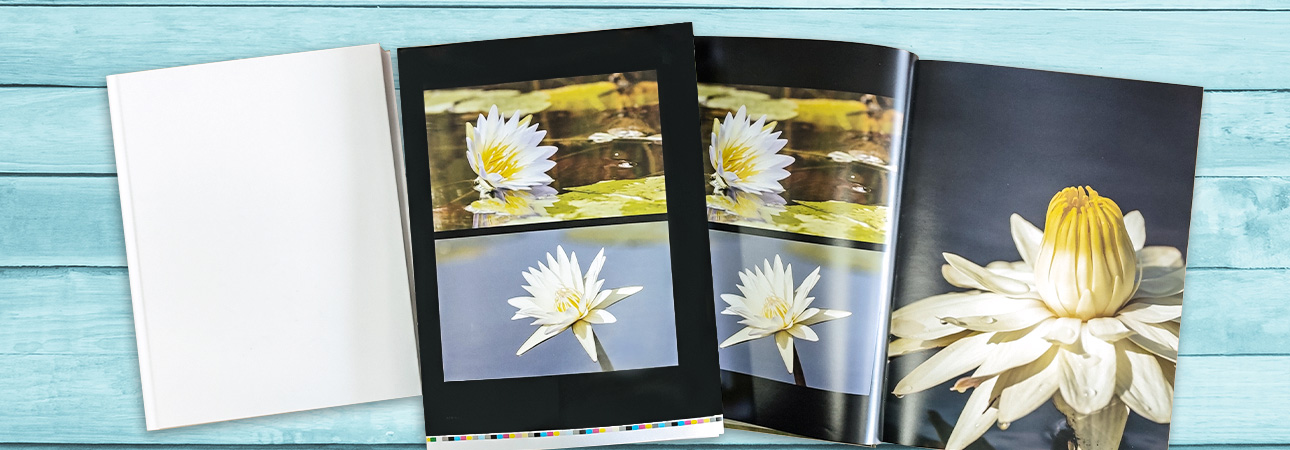
What Are Proofs and Samples?
Before we examine the kinds of proofs and samples that we offer at QinPrinting, it’s important to explain what proofs and samples are. Proofs and samples are very similar. They are both preview copies of your finished print product—whether that’s a book, catalog, brochure, or anything else—which you can use to check and approve before we go to press. Proofs and samples are essential to make sure that you’re 100% happy with the prepress artwork, design, and layout before we potentially print thousands of copies for you.
A proof can be either a physical, printed item or a digital version. A sample is always physical. In most cases, a digital copy of your finished print file is enough for you to see that everything’s in order or to see and correct any errors or last-minute changes you want to make. We provide a digital proof as standard with every print job. But we’ll explain what your other options are and when it might make sense for you to request a different kind of proof or sample.
What Proofs Do We Provide at QinPrinting?
At QinPrinting, we pride ourselves on our first-class customer service. We want you to be completely satisfied with your experience working with us and with the final product we deliver. For that reason, we offer a wide range of proofs and sample to cover every need. Let’s take a quick look at each of them; what they are and for what they’re used.
PDF Proof
A PDF (Portable Document File) proof is an electronic file that we send you for approval before we print your products. PDF is the industry-standard format for file exchange between the client and a printing company. We use PDFs because they are compatible with the best design software, can contain both text, images, and technical graphics, and can be opened on almost all devices, from a mobile phone to a tablet or a desktop computer. This is convenient and simple for everyone. It also makes circulating the proof to your team and working collaboratively across larger organizations more straightforward. And as it costs nothing to produce a PDF other than a few seconds and fewer click, we won’t charge you for PDF proofs. They’re always free.

How Do We Make a PDF Proof?
At the outset, you provide your text and artwork to us as PDFs as it’s the simplest and best way to export work from your design program and is ideal for prepress for offset printing. We process the PDF files you supply, manually checking them for common errors and any other issues. In the industry, we call this “pre-flighting”. Once we’re happy everything is in order, we’ll generate a scaled down version and send this back to you as a PDF proof via email or your preferred file sharing service. As only an electronic process has taken place so far, any corrections needed are easy and cheap to make.
What Do We Check in Before Providing Your PDF Proof?
We know there are printing companies out there who will not check your files before printing. To be honest, at QinPrinting, we regard that as a dereliction of duty towards the client. Whether you represent an international corporation or you’re a solo, first-time self-publisher, we’ll show the same dedication and detailed attention in preparing your print work as we do for all our clients. Once we receive your PDF files, we will manually check them, one-by-one. We’ll check that:
- The artwork has the correct amount of bleed.
- The images are the correct resolution.
- The text is not too close to the trim or fold edge.
- Small size texts are not set up as CMYK.
- Any solid black background is not set up as purely 100% black.
- The artwork size and the order size are as specified.
Once we’ve checked and corrected the above, we go on to prepare your PDF proof copy. To do that, we:
- Remove all embedded ICC profiles
- Check the fonts are embedded
- Flatten all transparency
- Convert all colors (RGB or Pantone) to CMYK if the job is to be printed full color
- Measure the spine thickness and ensure the text and images on the spine match the spine thickness
- Ensure the hardcover binding book has enough wrapping space on the cover artwork
- Make sure the foil stamping, spot UV, embossing and debossing artwork are vector graphics or vector texts.
If we find any issues, we’ll usually correct them for you. If for any reason that’s not possible, or we believe the issue needs to be corrected by you—either for technical or creative reasons—we’ll explain what the problems are and how to fix them. We’ll then send you a set of low-resolution PDF proof by email with any issues highlighted. If you are unsure how to correct any of these issues, you can upload the original artwork. We will then modify it, generate new PDF print files, and reproof to you. We are happy to offer advice on addressing any of the common issues met when creating print-ready artwork. Just talk to us, we’re as passionate about people as we are about print.
Most professional designers produce perfect artwork. Even if your artwork is perfect, we will still send a set of low-resolution PDF proof for approval. The PDF proof will give you a final chance to check any grammatical errors, typos, etc.
Can I Correct the Errors in PDF Proof?
No, you can’t. A PDF proof is low-resolution. It is only for approval by email; it is not the final printing file. If you need to correct any errors, this needs to be done in your original artwork. This then needs to be resubmitted to us. Comments can be made on the PDF proof in Adobe Acrobat. This can then be sent to others to comment on or to correct. For example, you may mark up a PDF proof and send it back to your designer for alteration. Or a PDF proof may have to be approved by several people. It is important to remember that the PDF proof is a low-resolution version of the actual print files.
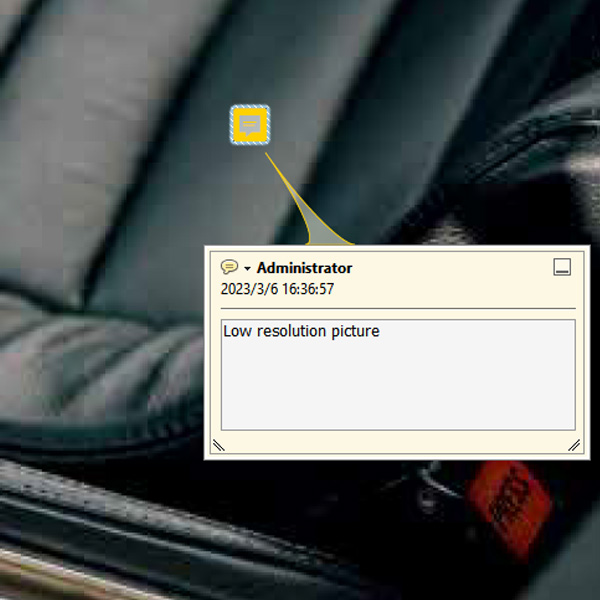
Compared to other options, a PDF proof is the most cost-effective proofing method.
Although, for customers and jobs that demand high color accuracy, a PDF proof alone may not be the best solution.
For anything color-critical, we recommended you use hard proofing, a digital sample, an offset printing sample, or a dummy. Sometimes more than one of these proofing methods may be needed.
The proofing method you choose depends on your time, budget and expectations. Most designers and clients will be happy with a PDF proof as they are confident about how their artwork is set up. And as PDF proofs are included free with our services, this will save time and keep costs down.
Hard Proof
A hard proof is also called a hard-copy proof. It’s a digitally printed inkjet sample that, just like a PDF proof, you can use to check everything is as you want it before you give the “green light” for an entire print run. We’ll print your final copies on an offset press. Hard proofs are only used to check the color and the content. It’s a set of page-by-page color printing proofs that we don’t bind like the final product—if it’s a book, for example. But the hard proof will show up any issues with images, logos, and text that may be problematic. So, it’s useful for checking the layout, interior artwork, and text content. But it doesn’t show anything about the materials or binding that you’ll get with the finished product. If you really need to check the paper and binding, then we’d recommend that you ask for a “dummy”, which we’ll discuss shortly.
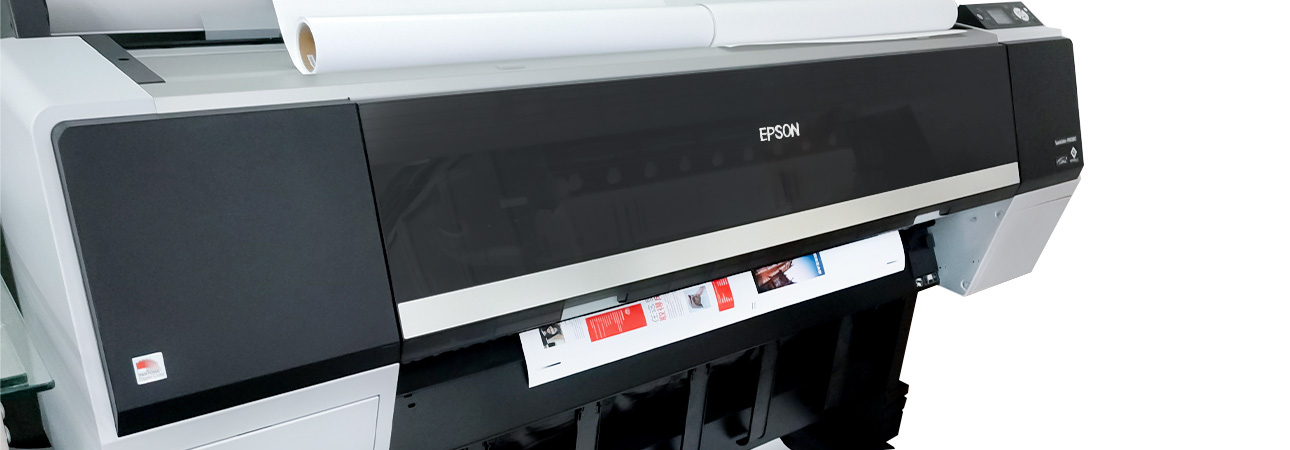
How Do We Produce Hard Proofs?
Why Request a Hard Proof?
Hard proofing may be worthwhile if color accuracy in the proof is an important factor for you. For example, if you want to check how the final colors will look after printing. In that case, a hard proof will allow you to see how the colors will print. However, we can only produce hard proofs on coated white paper. If your products will be printed on uncoated or colored paper, the hard proof can’t be used for checking colors. Most full-color printing products are printed on coated paper. So, hard proofs are the most economical method to check the final printing colors. It also can save color checking time.
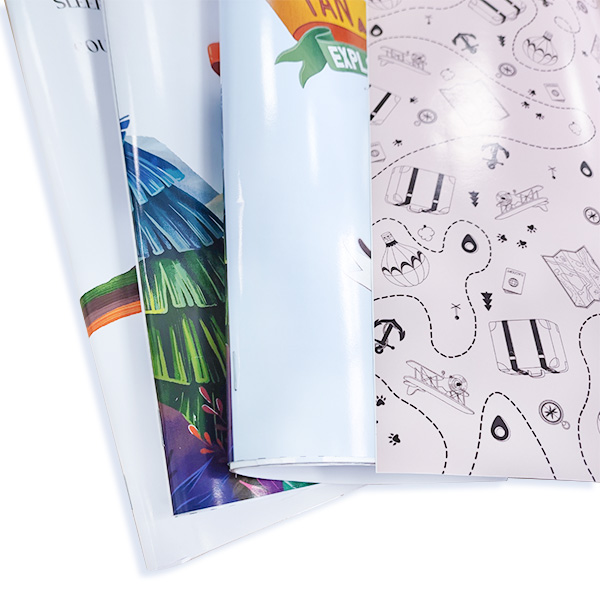
It takes one to two days to produce hard proofs after you approve PDF proofs.
Digital Sample
A digital sample is a printing sample that has been printed by a digital print machine, and produced by inkjet, toners and other processes. At QinPrinting—as with almost all offset printers—we use our high-grade offset printers only for final print runs. To save you a lot of time and money, we print our samples using a digital printer. Digital printers produce a reasonable representation of color but are not 100% accurate compared to an offset press. We’ll also use digital printing paper, which is different from the paper used in offset printing. But a digital sample gives you a good overall idea of how the final product will look. It shows the layout, text and image sizes and positions. Digital samples are often used for checking and markup when a purely electronic copy isn’t considered as useful. They’re also a cost-effective way of producing several alternative design options, so that you can choose between them.
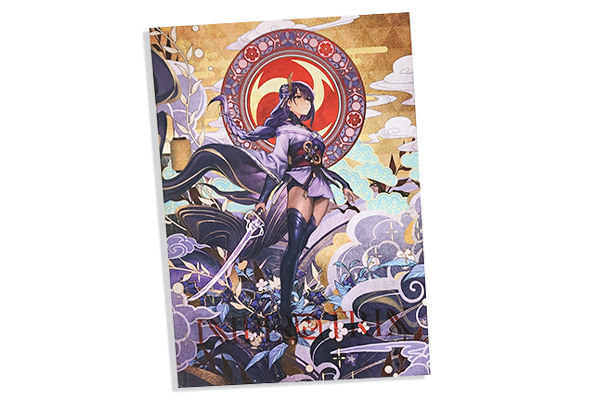
In this digital sample, we choose red color to instead of gold foil.
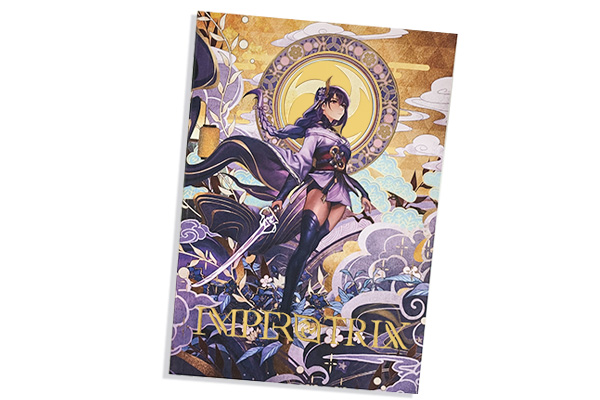
Dummy
So far, all the proofs we’ve looked at help you to check and approve the layout, artwork and design elements of your print project but they don’t show you the materials—such as interior paper stock and softcover or hardcase binding—or the final “look and feel” your book or catalog, say, will have held in the hand. A dummy—also called an unprinted mock-up—does exactly that. It’s a blank sample that uses the exact paper stock and binding method we’ll use for your finished product.
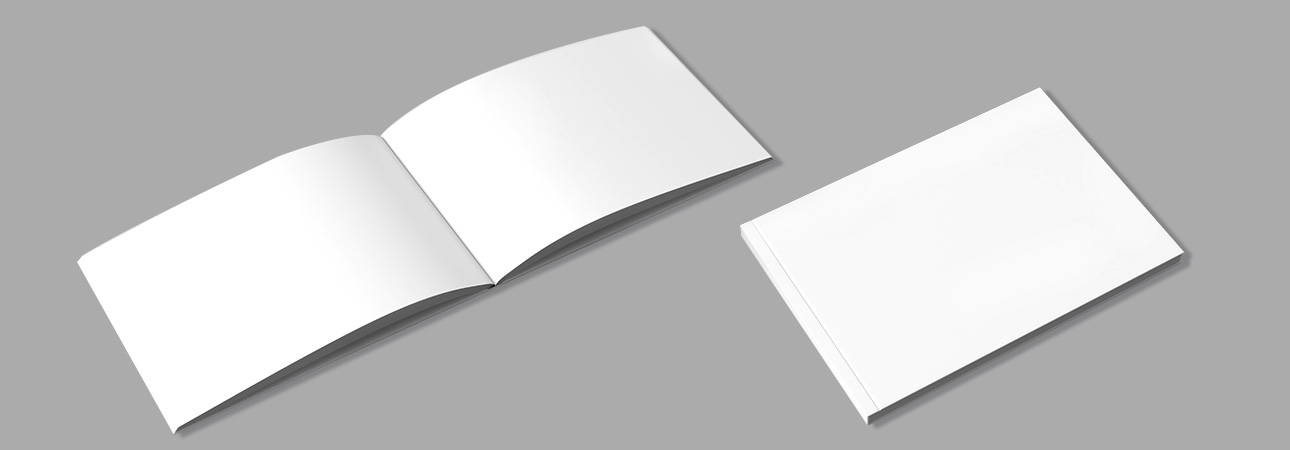
A dummy helps you check the interior paper, binding method, cover surface lamination, any special finishes, cover paper, book thickness, and book size. It shows you how the final product will look and feel without the printing. We assemble and bind all our dummies by hand. Because it is a “blank sample” which doesn’t include your content, you’ll usually use it in conjunction with a PDF or hard copy proof to get an accurate overall impression of what your product will be like when it comes off the offset press. Dummies are most commonly used with more complex projects such as custom packaging, board games, card decks, and specialty books.
Offset Printing Sample
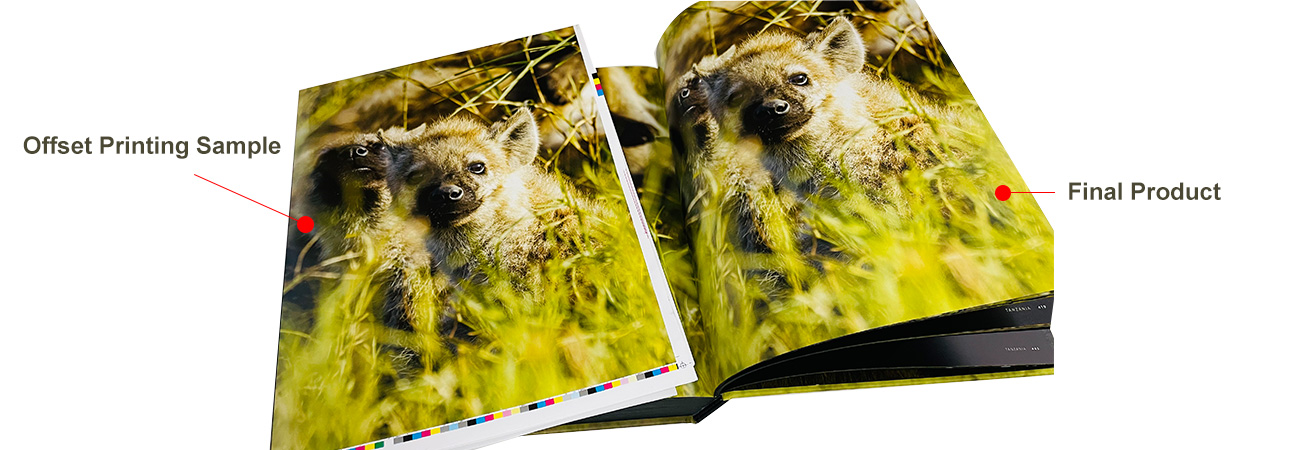
Option 1
Option 2
Option 3
You give us permission to begin mass production and after printing, we create a sample and ship it to you for checking. If you are not satisfied with anything, we may reprint those parts before compiling the final product. If the mistake is from our side, we’ll reprint it at our own expense. If the mistake is from your side, we will charge reprint fees. This option is popular for complex projects with many diverse elements such as board games and customized packaging.
To make an offset printing sample, we need to create plates just as we would with the final run. This makes it the most expensive proofing and sampling option, so it’s really only worthwhile for specialist needs or very long print runs of several tens of thousands of copies.
If you need an offset printing sample, we will provide you with a few pages proofed in this way, a set of hard proofs and a dummy as well. The offset printing sample will show you the results that will be produced with the exact paper stock you’ve chosen. The hard proof will show the complete job so that you can check text, colors, and resolution of all the pages and elements. A made-up dummy with the same paper stock will show you how it folds as well as the binding method.
Which Proofing Method Should I Choose?
As you’ve seen, there are various options and the final choice you make will depend on your budget, expectations, available time and the revenue value of the project for you or your business. The cheapest proof option is a PDF proof followed by a digital printing sample, hard proof, a dummy, and then an offset printing sample. If the job is of high value and needs to be produced to a standard excellence, then all of these proofing methods may be employed. This could be for an important book project, for example. However, if the job is urgent, and the requirement for color accuracy and image reproduction is lower, a PDF may be sufficient.
Flyers, smaller brochures, short run catalogs will be fine with a PDF proof. Repeat and regular jobs are also often produced just using PDF or hard proofs. The PDF proof is the only one that doesn’t incur any extra fees. As a rule of thumb, we say that for almost all basic printing jobs, you only need a PDF. But if you’re not sure, ask us. We’ll help you make the best decision for your project and your budget.
Need More Help? Talk to Us!
At QinPrinting, we pride ourselves on our first-class customer service. If you have any further questions about which proofs or samples would be best for your needs, we’ve made it super-easy for you to get in touch with our expert design team by telephone, via email, Skype, the chat box, or the contact form. Talk to us!

Start your printing project with QinPrinting
Explore all our different printing choices
